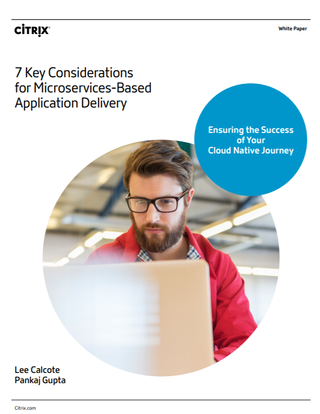How digital transformation is impacting application delivery
Bridging the gap between traditional and microservice application delivery will be a new challenge for evolving businesses

Digital transformation is now a vital part of most organisations’ business strategy. For many, embracing new technology is crucial to stay competitive and meet the challenges of an ever more competitive and complex world economy. Businesses must be agile and flexible, with an ability to scale applications up or down in line with customer demands.
Many digital transformation strategies for organisations now include the utilisation of cloud and new application architectures to boost profitability, while minimising vulnerabilities and reducing the likelihood of having to do extensive and costly software updates.
Applications have a vital part to play in this strategy. As organisations embrace the cloud, they are adding to the complexity of their IT infrastructure, which can prove challenging in terms of managing and maintaining visibility of multiple workloads across a diverse system of platforms and applications.
Microservice applications
Microservice applications are one way that these challenges can be met. Microservice applications are agile, configured to enable new features to be added without disrupting applications in production, and are designed to automatically spin up new instances in response to increasing user demand.
This drastically changes the way that applications are deployed and managed, bringing a new level of complexity to network infrastructures as traditional applications are not going away. Applications will continue to be designed for both microservices and traditional 3-tier implementations, and organisations will need to maintain traditional IT practices while developing agile practices for newer DevOps microservice applications.

Seven key considerations for microservices-based application delivery
Ensuring the success of your cloud-native journey
To bridge the gap between this new microservice application delivery and traditional application environments, some businesses are adopting hybrid application delivery infrastructures.
But supporting a hybrid application delivery infrastructure places unique demands on the business' Application Delivery Controllers (ADCs) due to the diverse qualities of both models.
Get the ITPro. daily newsletter
Receive our latest news, industry updates, featured resources and more. Sign up today to receive our FREE report on AI cyber crime & security - newly updated for 2024.
WIth microservices application delivery, ADCs are placed in a container and are deployed per microservice, whereas in legacy applications, they are in front of the application servers. There are also variations in the quantity of ADCs deployed; thousands may be required to support traffic with microservices applications, compared to just a few for traditional 3-tier applications.
These differing structural characteristics create a large management challenge that must be overcome to support both traditional and microservices applications in parallel. There are three strategies that can help businesses at different stages of digital transformation overcome some of these challenges:
Conventional Hardware - Most ADCs carry a fixed licensed capacity. Traditionally, when businesses needed to increase capacity, they either bought new appliances or upgraded the appliances they already owned. This buy it when you need it' strategy makes short-term sense for companies that prefer to manage hardware on-premise, and may not be ready to move to cloud. In the long run however, as business demands increase, recurring purchases can be expensive and disruptive, and can eventually lead to appliance sprawl' which is costly to support.
Consolidation with multi-tenancy - Many organisations are replacing multiple point solution appliances with a scale in' approach. Rather than continue to buy more and more devices, they choose to go in the opposite direction, consolidating existing load balancers, VPNs and firewalls onto a multi-tenant platform that can scale up as needed over time without the set-up and deployment requirements of complex upgrades.
Pooled capacity licensing - As applications transition to the cloud and the data centre evolves towards a software-defined model, the requirements for ADCs are rapidly evolving. A software-first ADC decouples software from hardware, freeing IT departments to allocate instance capacity flexibly across the network, in hardware or software either on-premise or in the cloud.
Low-code
Recently other methods of application delivery have gained market traction. Software has been developed to enhance existing DevOps processes, aligning the departments more closer than ever before, with an approach named low-code standing out from the pack.
Low-code is a visual approach to application delivery that’s specifically designed to ease digital transformation. It’s especially useful to SMBs, who typically have tighter budgets and fewer developers in-house.
Low-code allows users full autonomy over the application development process. The concept relies on constant visibility. As the interface is usable even to those without coding experience (reducing the amount of hand-coding necessary to produce applications), those who conjure the initial concept can then build the application, ensuring the finished product closely resembles the idea.
In this way, the development process is democratised. Employees outside typical IT teams are empowered to have continuous input into the application delivery process, encouraging collaboration and feeding into agile-working initiatives.
The real value in low-code is that it increases an organisation’s agility. It’s streamlined method enables ideas to come to market quickly, allowing even SMBs with fewer resources to compete with large enterprises with handfuls of developers at their disposal. Organisations can do more with less.




